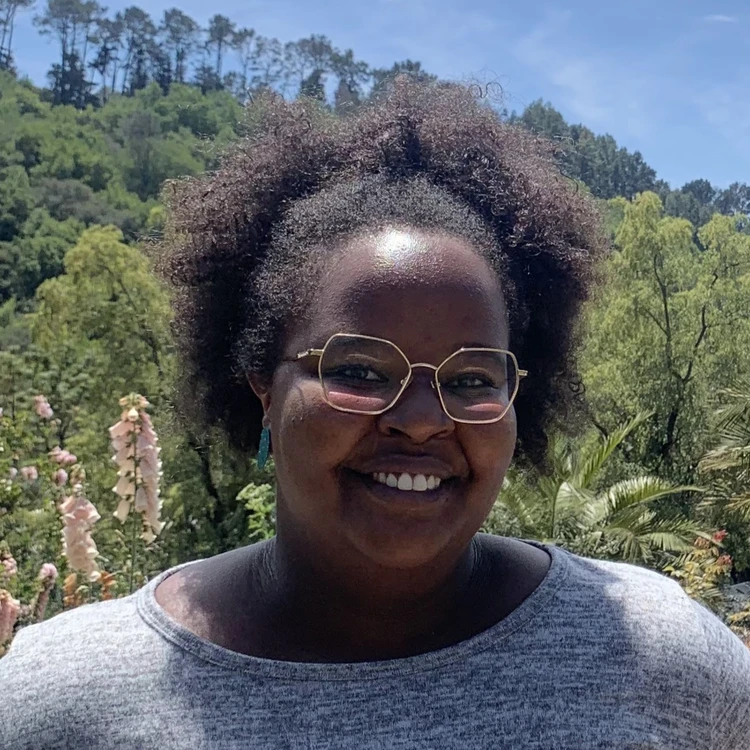Research Program
The Cao lab investigates microbial symbiosis between the insect-parasitic nematodes in the genus of Steinernema and their mutualistic bacterial partners from the genus Xenorhabdus. In addition to their ecological importance in soil ecosystems and practical value in promoting sustainable agriculture, these symbiotic pairs are valuable models for studying how animals and microbes adapt to changing environments. The Cao group is focused on establishing Steinernema hermaphroditum as a genetic model, with particular emphasis on its interactions with the mutualistic symbiotic bacterium Xenorhabdus griffiniae and the mild pathogen E. coli Nissle. Our current research investigates how X. griffiniae and E. coli Nissle colonize distinct intestinal tissues in S. hermaphroditum and elicit unique host responses at the transcriptional, biochemical, and behavioral levels.
To further investigate the immunological and neurological responses of Steinernema nematodes to both symbionts and pathogens, a major hurdle has been the lack of molecular genetic tools—particularly on the host side. To address this, our group began developing such tools, including CRISPR-Cas9–based genome editing in Steinernema. On the symbiotic bacterial side, we are building a synthetic biology toolkit by establishing a modular library in Xenorhabdus, which enables microbial engineering with broad applications, including the potential of RNAi delivery to the host. Together, these toolkits will accelerate our efforts to answer fundamental questions in microbial symbiosis and translate our findings into innovative strategies for environmental engineering—for example, designing bacterial biosensors capable of detecting nematodes in the soil ecosystem.
CV
- Postdoctoral Fellow California Institute of Technology, Pasadena, CA 2017-2022
- Ph.D. in Microbiology University of Wisconsin, Madison, WI Aug 2017
- B.A. in Biology Colorado College (Cum Laude; Music and Chemistry minors) May 2011
- 2021 NSF-Edge joint grant, (to generate ideas, produce preliminary data and publish)
- 2021 Center for Environmental Microbial Interactions (CEMI) pilot grant, Caltech
- 2021 Resnick small-scale grant Caltech Resnick Sustainability Institute
- 2019 NIH-NRSA F32 Individual Postdoctoral Fellowship
- 2017 Chair’s Award for Excellence in Research, Department of Bacteriology, UW Madison
- 2016-17 E. Michael & Winona Foster Idea Graduate Fellowship, UW Madison
- 2015 WARF Discovery Challenge Research Award, Wisconsin Alumni Research Foundation
- 2015-16 Louis and Elsa Thomsen Wisconsin Distinguished Graduate Fellowship, UW Madison
- 2007-11 The President’s Scholarship, Colorado College
- 2007-11 International Student Scholarship, Colorado College
- 2025 Invited speaker for Microbiology Seminar Series, George Washington University, Washington DC.
- 2024 Vibrio-Squid Symbiosis Annual Conference, Keynote speaker: ‘Establish Steinernema nematodes as an emerging genetic model to study microbial symbiosis’, Pasadena, CA.
- 2024 Metaorganism Symposium, Keynote speaker: ‘Establish Steinernema nematodes as an emerging genetic model to study microbial symbiosis.’ Kiel, Germany.
- 2024 Symposium for Insect Parasitic Nematodes, Keynote speaker: ‘Steinernema parasitic nematodes in the molecular genetics age: genetics tools help study microbial symbiosis.’ Leuven, Belgium.
- 2022 Invited guest in the podcast Genetics in Your World by Multimedia Subcommittee at the Genetics Society of America.
- 2017 Presentation and lecture, Monsanto Company, San Diego, CA.
- 2016 MDTP Admission Committee, UW Madison
- 2016 Presenter at Wisconsin Science Festival, UW Madison
- 2015 MDTP Recruitment Committee, UW Madison
- 2014 Interpreter and host for the invited international speaker at multiple Food Sciences seminars at Chinese institutions: Zhejiang University, Hangzhou; Jiangnan University, Wuxi; Beijing Technology & Business University, Beijing; China.
- 2014 Organizer for Life Sciences Career Day, UW Madison
- 2012-14 Expanding Your Horizons conference for Middle School Girls, UW Madison
- 2012-16 PEOPLE Program Symbiosis Presentation, UW Madison
- 2025 Mentor of post-baccalaureate research fellow Mingyuan Xu. Co-advisor: Dr. Phoebe Lostroh.
- 2024-25 Mentor of Postdoctoral Fellow Dr. Sally Ireri.
- 2023-25 Co-mentor for Caltech graduate student Elin Larsson (Caltech Bioengineering Major) Ph.D. thesis chapters: Characterization of Xenorhabdus griffiniae responses to biochemical Signals from its nematode host Steinernema hermaphroditum and their application in biosensor engineering. Thesis advisors: Dianne K. Newman and Richard M. Murray.
- 2023-25 Serving Ph.D. thesis committee for Caltech Bioengineering student Elin Larsson.
- 2022 Guest lecturer in Microbial Genetics and Molecular Biology; Colorado College.
- 2021-22 Co-mentor for undergraduate student Victoria Chen (Caltech Bioengineering Major, now graduate student at MIT) for undergraduate senior thesis: ‘Steinernema hermaphroditum as a delivery system for engineered bacteria actuation in the soil ecosystem’. Thesis advisor: Richard M. Murray; Co-mentor: John Marken.
- 2019-22 Mentor for summer undergraduate students (Co-mentored with Paul W. Sternberg) Tammy Diep (2019-22, Now graduate student at Boston University, Occupational Therapy). Carolina Gonzalez-Cavazos (2019-20, Now graduate student at Scripps Research Institute)
- 2019-20 Mentor for high school students (undergraduate students majoring in biological sciences): Yujun Li (junior, Alhambra High School, Harvard University). Abigail Yuhan (senior, Westridge High School for Girls, University of Chicago). Tammy Diep (senior, Alhambra High School, UC-San Diego). Tanya Lee (sophomore, Arcadia High School, UC-Los Angeles).
- 2015 Consultant and Interpreter in Microbiology: written and oral translation (English-Chinese), interpretation and presentation in microbiology training materials. Amlan International, Oil-Dri Corporation of America.
- 2014 Microbiology Teaching Fellowship: UW Madison. Director: Jae-Hyuk Yu, Ph.D.
- 2014 Mentor for UW Madison Symbiosis Cluster Summer Internship: UW Madison. PI: Heidi Goodrich-Blair, Ph.D. Spring 2013 Graduate Teaching Assistant: Introduction to Microbiology Laboratory, UW Madison Advisor: Timothy Paustian, Ph.D.
Current Preprints and Selected Publications
†denotes corresponding author publications. **denotes equal contribution as co-first authors.
Chen, V**., Marken, J. P**., Murray, R. M. & Cao, M†. Escherichia coli Nissle 1917 occupies previously undocumented host niches in the insect-parasitic nematode Steinernema hermaphroditum. (2025) doi:10.1101/2025.07.03.663106. Submitted to Environmental Microbiology. [link to current preprint]
Larsson, E. M., Myers, C. R., Newman, D. K†. & Cao, M†. The nematode symbiotic bacterium Xenorhabdus griffiniaecan sense and respond to the presence of its host Steinernema hermaphroditum. (2025) doi:10.1101/2025.06.16.660008. Under review: Applied and Environmental Microbiology. [link to current preprint]
Heppert, J. K. Awori, RM. Cao, M. Chen, G. Mcleish, J. Goodrich-Blair, H. Analyses of Xenorhabdus griffiniaegenomes reveal two distinct sub-species that display intra-species variation due to prophages. BMC Genom. 25, 1087 (2024). [link to paper]
Cao, M†. CRISPR-Cas9 genome editing in Steinernema entomopathogenic nematodes. bioRxiv 2023.11.24.568619 (2023) doi:10.1101/2023.11.24.568619. Minor revision in Genetics.[link to current preprint]
Cao, M†., Schwartz, HT, Tan, C-H and Sternberg, PW†. The entomopathogenic nematode Steinernema hermaphroditum is a self-fertilizing hermaphrodite and a genetically tractable system for the study of parasitic and mutualistic symbiosis. Genetics 220, (2022). [link to paper]
Mucci NC, Jones KA, Cao M, Wyatt MR 2nd, Foye S, Kauffman SJ, Richards GR, Taufer M, Chikaraishi Y, Steffan SA, Campagna SR, and Goodrich-Blair H. Apex predator nematodes and meso-predator bacteria consume their basal insect prey through discrete stages of chemical transformations. mSystems. 7(3), e0031222 (2022). [link to paper]
Cao, M and Goodrich‐Blair, H. Xenorhabdus nematophila bacteria shift from mutualistic to virulent Lrp‐dependent phenotypes within the receptacles of Steinernema carpocapsae insect‐infective stage nematodes. Environ Microbiol22, 5433–5449 (2020). [link to paper]
Stilwell, MD**, Cao, M**, Goodrich-Blair, H and Weibel, DB. Studying the symbiotic bacterium Xenorhabdus nematophila in individual, living Steinernema carpocapsae nematodes using microfluidic systems. mSphere 3, e00530-17 (2018). [link to paper]
Cao, M, Patel, T, Rickman, T, Goodrich-Blair, H, and Hussa, EA. High levels of the Xenorhabdus nematophilatranscription factor Lrp promote mutualism with the Steinernema carpocapsae nematode host. Appl Environ Microb83, e00276-17 (2017). [link to paper]
Cao, M†, and Goodrich-Blair, H. Ready or not: Microbial adaptive responses in dynamic symbiosis environments. J Bacteriol 199, e00883-16 (2017). [link to paper]


